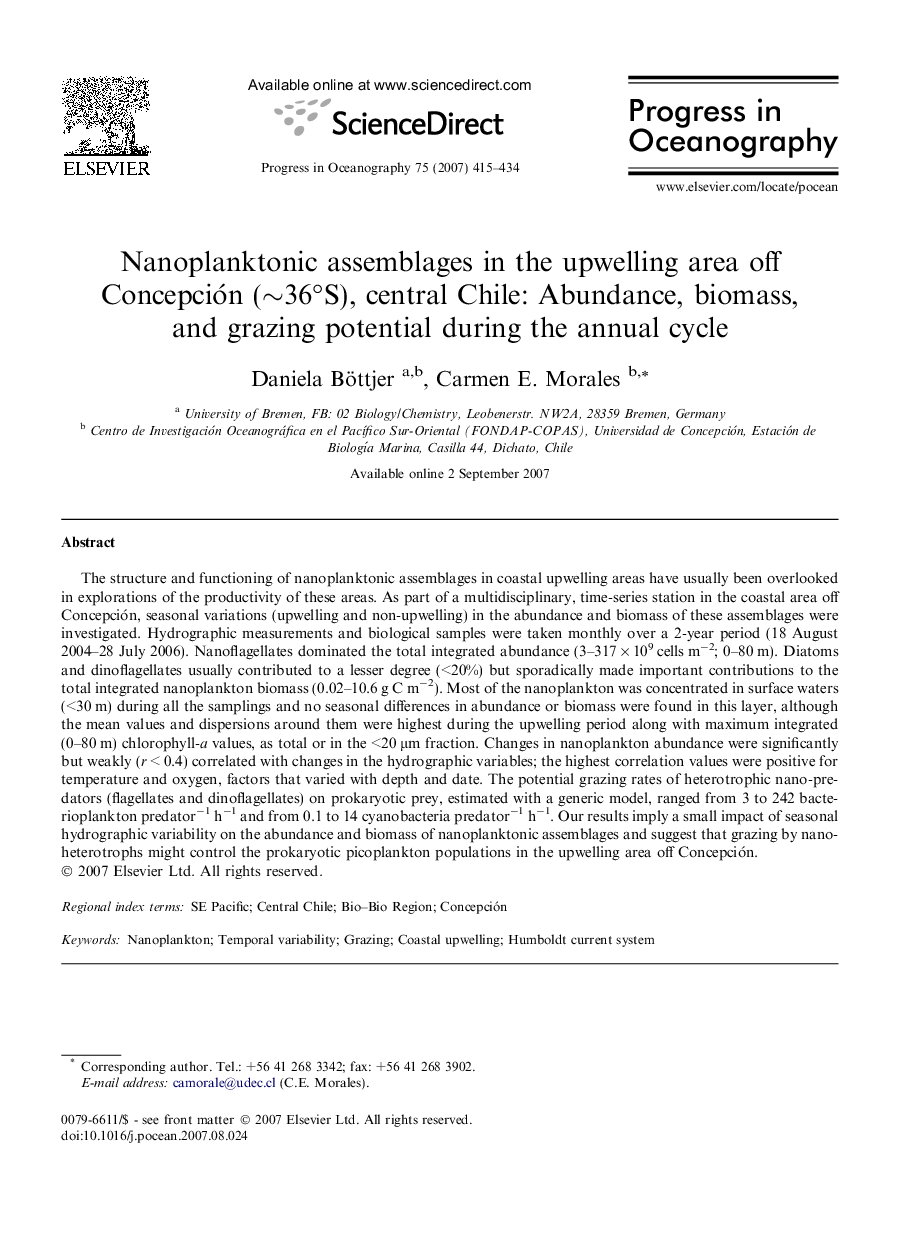| کد مقاله | کد نشریه | سال انتشار | مقاله انگلیسی | نسخه تمام متن |
|---|---|---|---|---|
| 4553793 | 1328931 | 2007 | 20 صفحه PDF | دانلود رایگان |

The structure and functioning of nanoplanktonic assemblages in coastal upwelling areas have usually been overlooked in explorations of the productivity of these areas. As part of a multidisciplinary, time-series station in the coastal area off Concepción, seasonal variations (upwelling and non-upwelling) in the abundance and biomass of these assemblages were investigated. Hydrographic measurements and biological samples were taken monthly over a 2-year period (18 August 2004–28 July 2006). Nanoflagellates dominated the total integrated abundance (3–317 × 109 cells m−2; 0–80 m). Diatoms and dinoflagellates usually contributed to a lesser degree (<20%) but sporadically made important contributions to the total integrated nanoplankton biomass (0.02–10.6 g C m−2). Most of the nanoplankton was concentrated in surface waters (<30 m) during all the samplings and no seasonal differences in abundance or biomass were found in this layer, although the mean values and dispersions around them were highest during the upwelling period along with maximum integrated (0–80 m) chlorophyll-a values, as total or in the <20 μm fraction. Changes in nanoplankton abundance were significantly but weakly (r < 0.4) correlated with changes in the hydrographic variables; the highest correlation values were positive for temperature and oxygen, factors that varied with depth and date. The potential grazing rates of heterotrophic nano-predators (flagellates and dinoflagellates) on prokaryotic prey, estimated with a generic model, ranged from 3 to 242 bacterioplankton predator−1 h−1 and from 0.1 to 14 cyanobacteria predator−1 h−1. Our results imply a small impact of seasonal hydrographic variability on the abundance and biomass of nanoplanktonic assemblages and suggest that grazing by nanoheterotrophs might control the prokaryotic picoplankton populations in the upwelling area off Concepción.
Journal: Progress in Oceanography - Volume 75, Issue 3, November 2007, Pages 415–434